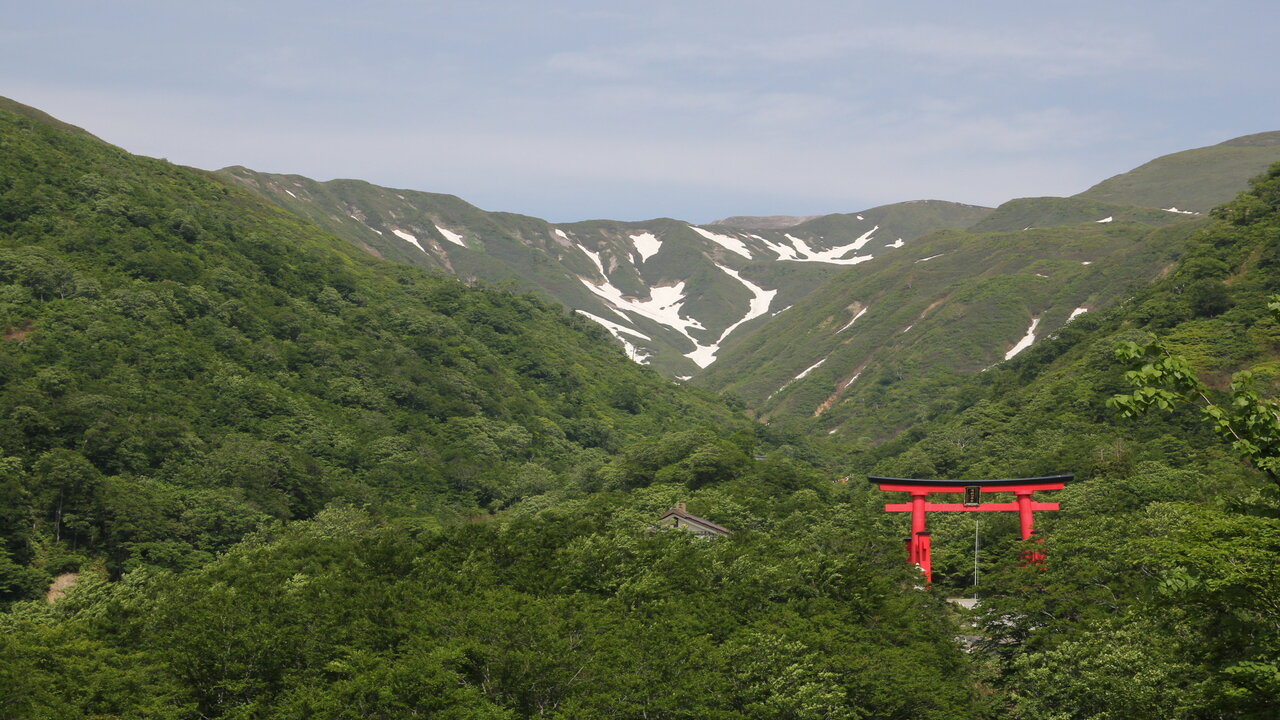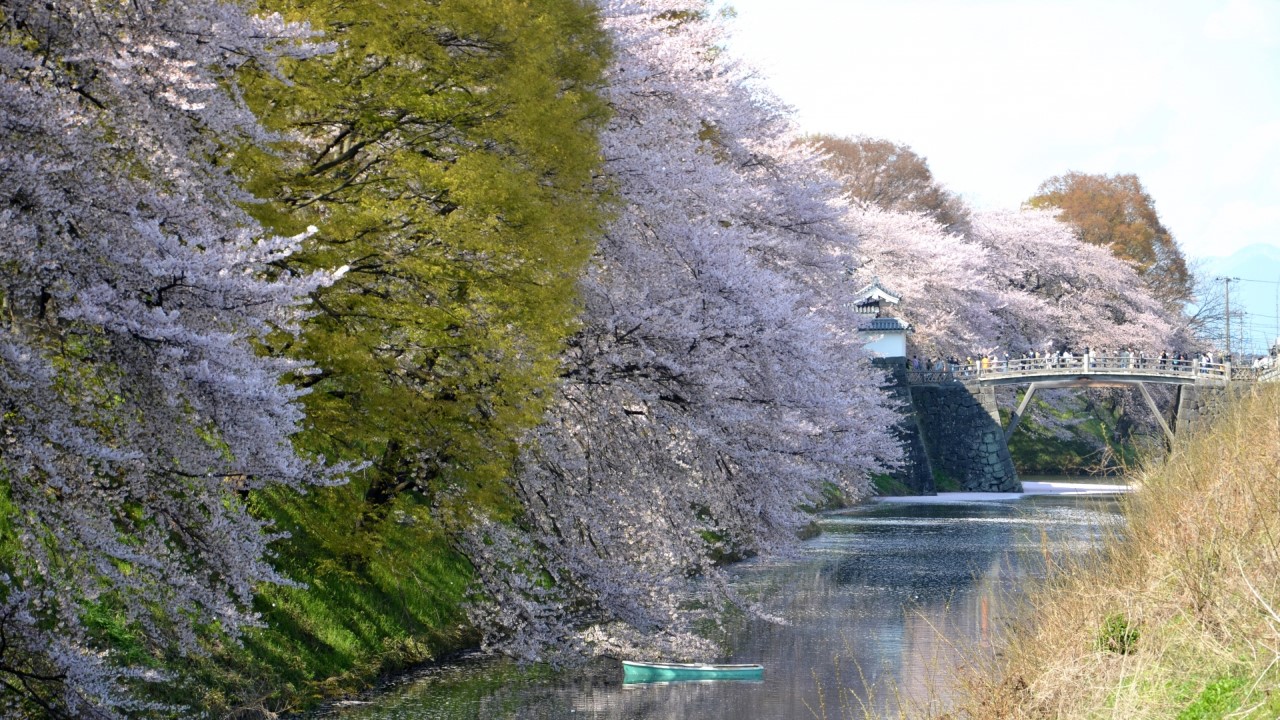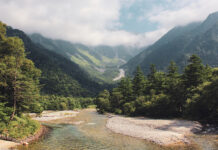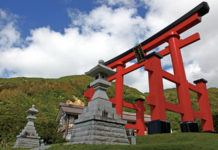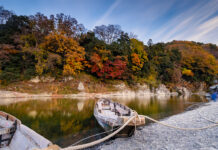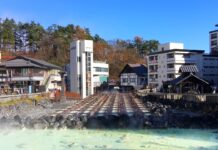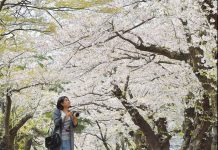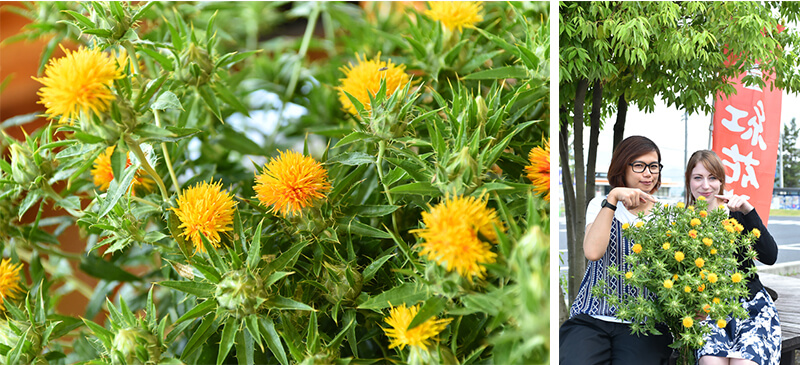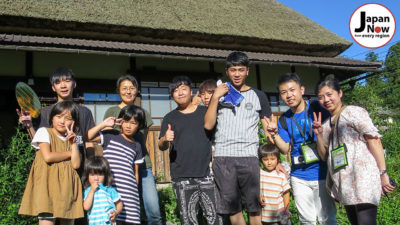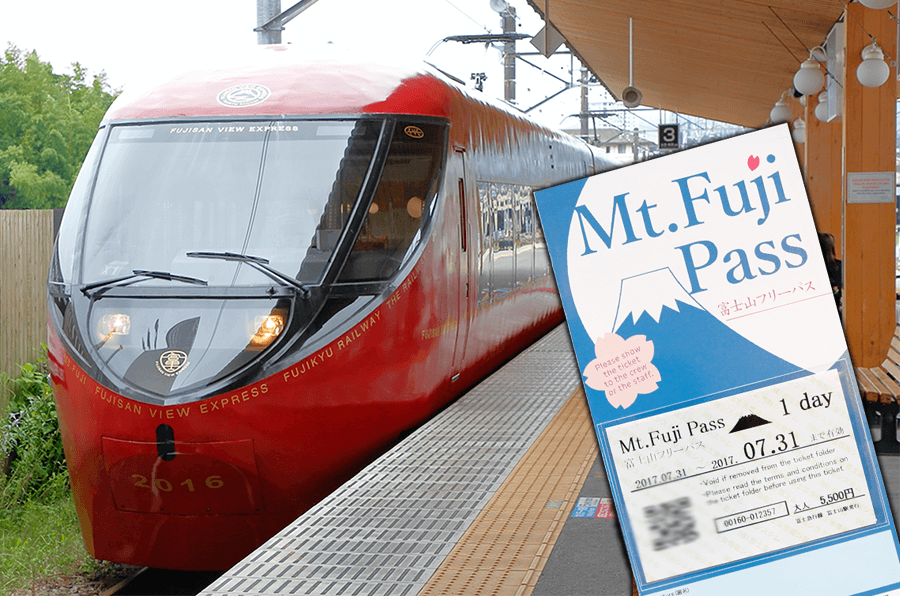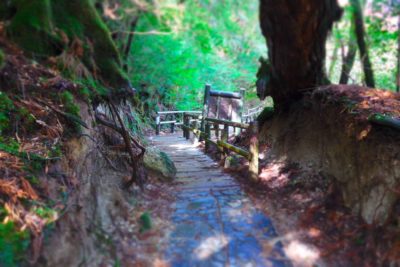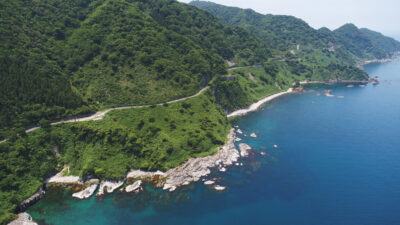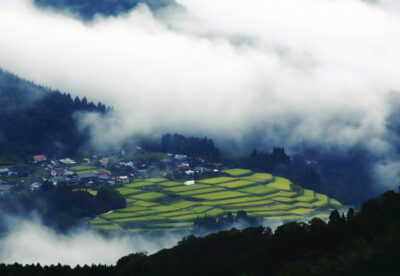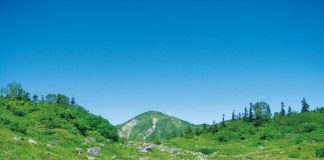Where is Dewa Sanzan?
Tohoku has three holy mountains, known collectively as Dewa Sanzan, that remain one of the most sacred sites in the country. The three consist of Mt. Haguro, Mt. Gassan, and Mt. Yudono. Its landscape, in Yamagata Prefecture, is defined by the stunning natural beauty of mystical mountains, volcanic lakes, hot springs, and farmlands.
This is where the soul of Japan lies in its traditional and religious culture and where ancient mountain worship is still very much practiced. Against this background, we embarked on an epic journey to trace the footsteps of pilgrims who are followers of Shugendo.
The Three Mountain Blessings of Dewa Sanzan

In many cultures, mountains often have religious significance, as many gods are believed to live there. Shugendo is an ethnic religion influenced by Buddhism, Shintoism, Taoism and spiritual faith. Its main purpose is to strengthen the connection between people and nature. Worshipers may reach enlightenment in this way. Practitioners preach the teaching that “nature is a manifestation of the gods and we should live alongside it with respect.”
Mountains and forests have paramount importance in Shugendo. The Dewa Sanzan mountains of Mt Haguro (419m), Mt Gassan (1984m) and Mt Yudono (1504m) are the centres of pilgrimage in the region. The followers, known as Shugenjas or Yamabushi (mountain monks), have been following the rites of worship for the last 1,400 years. Followers embark on long pilgrimages and practice austere feats of physical endurance of natural elements as an ascetic rite of passage to gain spiritual power.
We had the privilege of experiencing the immersive ceremony of Shugendo first hand by visiting the three sacred mountains that represents the present, death and rebirth at Mt. Haguro, Mt. Gassan and Mt. Yudono respectively.
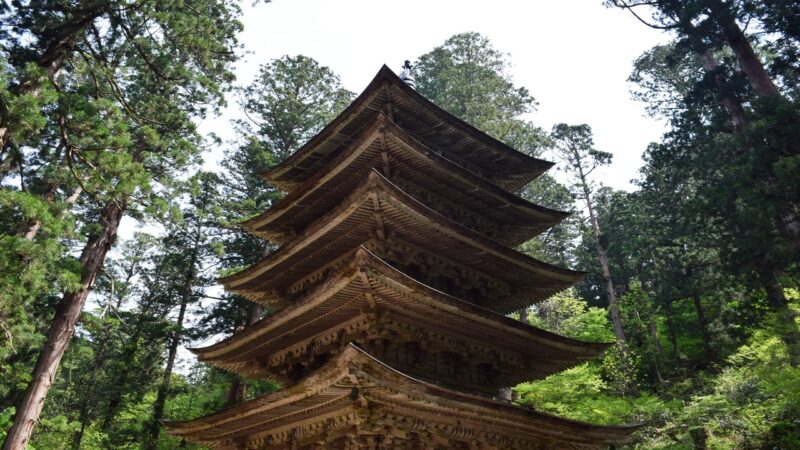
How to Pray in the Official Shinto Style at Mt. Haguro
We arrived at Mt. Haguro as dusk was setting in and, after a short visit to Ideha Museum nearby to get an insight of Shugendo and Dewa Sanzan, we entered the sacred site through the torii, a wooden gateway that is found in all sacred sites in Japan.

A long flight of stone steps, known as the Ishi-Dan, led down to an enchanting forest with towering cedar trees along the ancient pilgrim route. The 1.7km trail built in 1648 has 2,446 steps leading to the Sanjin Gosaiden shrine at the summit. There are 33 carvings etched on the steps and it is believed that if you can find all 33, your wishes will come true.
As we were pressed for time, we could only follow the sacred path as far as the 600-year-old Goju-no-to, the five-storied pagoda, a recorded national treasure. In the gloom of the forest, the ornate pagoda exuded an air of mysticism that lent to the belief that a deity of the forest lives in it.
The Yamanushi of Dewa Sanzan
When we arrived at Sanjin Gosaiden, the main shrine at the summit, a Yamabushi dressed in his traditional religious garb met us. He sounded a horagai, a religious conch trumpet, as a welcome and to ward off bad spirits. Then he led us to the inner sanctum of the shrine. There, a monk dressed in a splendid ceremonial robe with motifs of cranes performed a special ceremony accompanied by a beating taiko drum. He then cleared the space around us of malevolent energy by wafting a pole with white paper strips attached to the end and ringing bells to cleanse the air. Finally, he chanted some mantras in a trance-like voice, which reverberated around the room, sending powerful vibrations into the ambience.

He then cleared the space around us of malevolent energy by wafting a pole with white paper strips attached to the end and ringing bells to cleanse the air. Finally, he chanted some mantras in a trance-like voice, which reverberated around the room, sending powerful vibrations into the ambiance. We felt blessed and awed to participate in the ceremony where “spirituality was born”. To complete the ritual, we bowed twice, clapped our hands twice and bowed once again.
We stayed the night at a shukubo, a traditional temple lodge, owned by a Yamabushi and his wife. They welcomed us graciously by kneeling Japanese style on the floor with their legs folded behind them. The delightful lodge was immaculate, and the minimalist décor was the personified tranquility that we badly needed after a long journey. I would highly recommend staying in a shukubo to attain a Zen state of mind. Early next morning, our host performed a Shinto ritual prayer to bless. Then he wished us a safe journey to Mt Gassan and Mt. Yudono.

The Japanese Ceremony of Rebirth at Dewa Sanzan
To participate in the ceremony, we first to make the journey up the mountain. We headed to Mt. Gassan in howling wind and rain to visit a shrine. Actually, the pilgrimage trail was officially closed for the season. However, we braved the elements by treading precariously on the slippery, wooden walkway laid across a marshland of dwarf bamboo and grassland.
After a twenty minutes’ walk, we reached a small shrine presided by a giant stone rabbit, the guardian of the mountain.
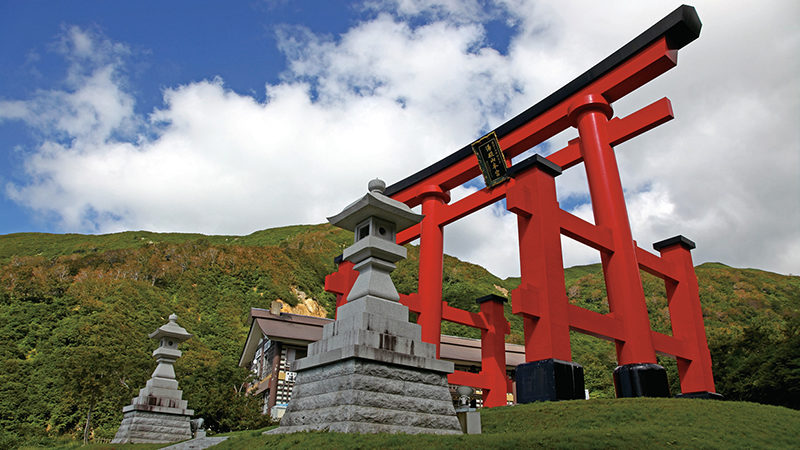
This mountain symbolized the path to death. In fact, the short journey we took in the inclement weather conveyed that message. In the summer, pilgrims could hike to the summit, where the main shrine lies. From there, they could also hike to Mt. Yudono, the last mountain on the holy trail.
Our visit to Mt. Yudono was an epic experience where we were sworn to secrecy by the priest about the ceremony of “rebirth” that we underwent to symbolize being spiritually reborn to start a new journey in life. It is a taboo to divulge the secret of the Japanese ritual of rebirth, but suffice to say that the experience is something I will always remember.
Dewa Sanzan is a pilgrimage, but mere mortals with spiritual interest will find the journey enlightening and soul stirring. Reflecting on my own awesome experience of the religious encounter, I now appreciate why mountains belong to the realms of the gods.
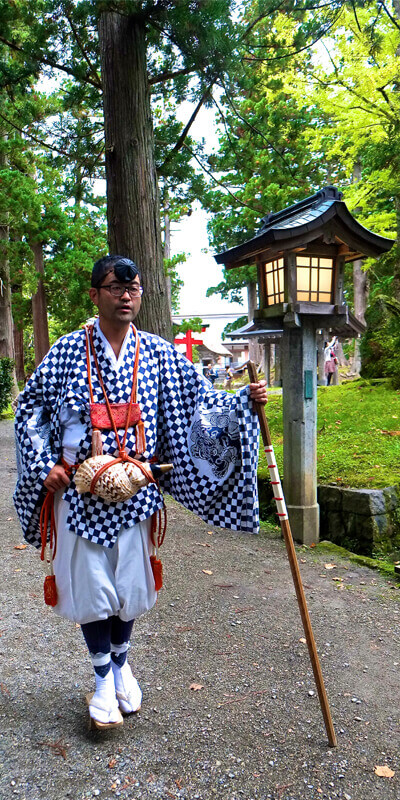
Hagurosan
Access: 40-min by bus from JR Tsuruoka Station, get off at Zuishinmon.
55-min by bus to the summit.
Gassan
Hours: Closed late September until June
Access: 1h30-min by Shonan-
Kotsu bus from JR Tsuruoka Station to Gassan Hachigome.
Yudonosan
Hours: Closed late September until June Admission: 500 yen
Access: 1h30-min by Shonan-Kotsu bus from JR Tsuruoka Station to
Yudonosan.
 0
0

